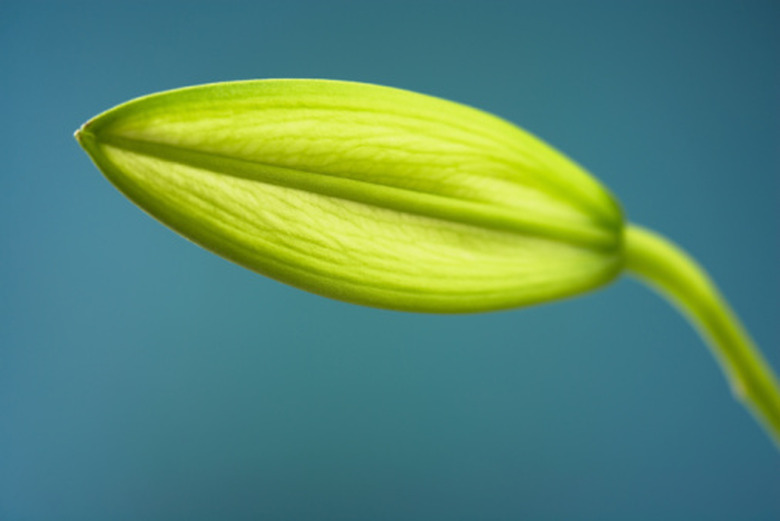Reproduction Of Plant Cells
Plants germinate, sprout, root, leaf out and bloom mainly through the process of mitosis occurring at the cellular level. Much of the action happens in meristematic tissue containing undifferentiated cells capable of specialization.
Vascular plants, flowering plants, ferns, cacti and mosses are among the thousands of plant groups around the world capable of perpetual plant reproduction.
Asexual Plant Cell Division
Asexual Plant Cell Division
Plant cells that reproduce by mitosis make identical copies of themselves to sustain the local population. Rapid growth through mitosis explains how crops grow so fast in just one season.
In asexual plant cell division, there is no recombination of genes during mitosis, and intraspecies biodiversity is limited.
Plant Mitosis in Cell Division
Plant Mitosis in Cell Division
Mitosis is the predominant process involved in plant cell division and normal growth. The cell cycle starts with interphase where the cell secures nutrients, metabolizes, enlarges, synthesizes proteins and replicates organelles.
When conditions are favorable for cell division, the cell's chromosomes condense and line up at the middle of the cell before being pulled apart by spindle fibers. A nucleus reforms in each cell to house the chromosomes, and a cell plate separates the two cells via cytokinesis.
Plant Reproduction: Fragmentation
Plant Reproduction: Fragmentation
Spirogyra exist as unicellular organisms or as long filamentous seaweed. Filaments are comprised of plant cells lined end-to-end. If filaments break apart, each fragment can continue growing on its own.
Spirogyra is an example of a plant that reproduces asexually through fragmentation and sexually through conjugation (gamete formation).
Plant Cell Reproduction: Meiosis
Plant Cell Reproduction: Meiosis
Plants have generational life cycles that alternate between methods of asexual and sexual reproduction. Sexual reproduction in plants occurs when a sporophyte with a full set of chromosomes divides by meiosis into haploid spores containing 50 percent less DNA than the parent cell.
The spores grow into multicellular haploid plants called gametophytes that produce haploid gametes via mitosis. Two gametes form a diploid zygote that forms sporophytes, thus completing a full life cycle.
Are There Centrioles in Plant Cells?
Are There Centrioles in Plant Cells?
The centriole is a microtubule believed to play a role in spindle formation and chromosome separation. Only cells of animals and lower plants contain a centriole; higher-order plants do not have a centriole.
Instead, chromatin condenses into tightly coiled chromosomes that line up along the middle of the cell and then separate. Movement of chromosomes is assisted by microtubules and proteins in the cytoplasm that act like a spindle even though centrioles are not present.
How Does Cytokinesis Differ in Plant and Animal Cells?
How Does Cytokinesis Differ in Plant and Animal Cells?
The last stage of plant cell division ends with cytokinesis. Sets of vesicles line up in the middle of the cytoplasm. The new arrivals form a cell plate that will divide the large cell into two smaller cells. Then cellulose production starts, which turns the cell plate into a sturdy cell wall supporting the cell membrane.
Animal cells are flexible and do not have a cellulose wall protecting their membrane. A protein ring around the middle of the elongated, dividing cell squeezes the plasma membrane inward, forming a cleavage furrow. The parent cell divides into two daughter cells, each having their own nucleus, cytoplasm and membrane.
Adaptations of Plant Reproduction
Adaptations of Plant Reproduction
Plant mitosis and other forms of plant cell division enable plants to live and multiply in extreme climates. For example, some types of plants shoot up during the rainy season and then die, leaving behind drought-tolerant seeds that won't sprout until the rains return.
Some seeds and spores remain dormant for years and then come to life. In fact, researchers in Israel are successfully growing a thriving date palm tree from a 2,000-year-old seed, according to National Geographic.
References
- BioNinja: Meristems
- All About Algae: What Are Algae?
- Frontiers in Plant Science: Chromosome Segregation in Plant Meiosis
- Biology Teaching Resources: Spirogyra
- Dummies: Plant Production
- British Society for Cell Biology: Centriole
- CK-12 Foundation: Mitosis
- National Geographic: 'Methuselah' Palm Grown From 2,000-Year-Old Seed Is a Father
Cite This Article
MLA
Dowd, Mary. "Reproduction Of Plant Cells" sciencing.com, https://www.sciencing.com/reproduction-plant-cells-7989582/. 15 April 2019.
APA
Dowd, Mary. (2019, April 15). Reproduction Of Plant Cells. sciencing.com. Retrieved from https://www.sciencing.com/reproduction-plant-cells-7989582/
Chicago
Dowd, Mary. Reproduction Of Plant Cells last modified March 24, 2022. https://www.sciencing.com/reproduction-plant-cells-7989582/
